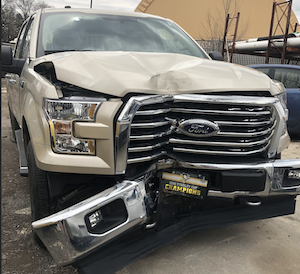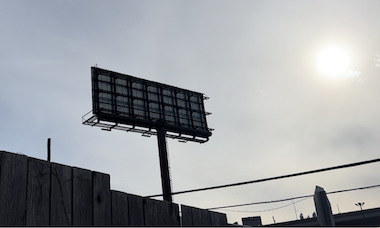Actions Speak Louder Than Words
 A party injured in an accident may have reasons for hesitating to get medical treatment. Maybe the injuries “didn’t seem so bad” at first. Or, as in one of our cases, an injured grandmother was primarily focused on getting treatment for her two grandchildren, after their Ford F150 had been T-boned and spun into a telephone pole. The grandmother turned down emergency medical service and emergency room treatment for herself.
A party injured in an accident may have reasons for hesitating to get medical treatment. Maybe the injuries “didn’t seem so bad” at first. Or, as in one of our cases, an injured grandmother was primarily focused on getting treatment for her two grandchildren, after their Ford F150 had been T-boned and spun into a telephone pole. The grandmother turned down emergency medical service and emergency room treatment for herself.
But any delay in getting treatment — even if legitimate — screams one fact to the jury: after the accident, there was something else more important to the plaintiff than her own treatment. With that, the jury will ask: how bad were the injuries really?
Jury Skepticism Toward Injury Claims
 To understand the mindset of jurors, first, realize that they’ll see at least one lawyer billboard on the way to the courthouse for jury duty: “Injured in an Accident?” They might also hear a cheesy lawyer commercial (or five) on the radio en route to the courthouse: “Call now!!!! No Fee Unless We Recover Money!”
To understand the mindset of jurors, first, realize that they’ll see at least one lawyer billboard on the way to the courthouse for jury duty: “Injured in an Accident?” They might also hear a cheesy lawyer commercial (or five) on the radio en route to the courthouse: “Call now!!!! No Fee Unless We Recover Money!”
Then, when seated in court, on the jury, each juror will listen to the evidence but struggle to find the “truth.” There are at least three sides to every injury claim: the injured-plaintiff’s version, the negligent-Defendant’s version, and the truth. To complete their civic duty (so they can get back to their families and/or the office work piling up in their absence) the jury will sift through the evidence and pick out one or two “key facts” that decide the case, in their minds.
Don’t let them get stuck on this: Why did the Plaintiff delay getting medical treatment?
Low or Zero Verdicts in Delay of Treatment Cases
The simple fact is: settlements and verdicts across the Commonwealth of Pennsylvania are lower (or zero) in injury cases where the Plaintiff delayed getting treatment. A recent example is Crawford v. Nolan, C.P. Delaware County, CV-2021-0001771. There, the Plaintiff, Craig Crawford, age 40, was lawfully operating his vehicle when “rear-ended” by the Defendant’s vehicle. Mr. Crawford sustained neck and back injuries from the accident. Granted, the plaintiff had elected “limited tort” on his auto policy, which restricted him from recovering for pain and suffering, unless his injuries had caused a “serious impairment” of an important bodily function. However, he presented abundant evidence, showing his need for:
-
-
- Physical therapy for a year,
- A course of epidural injections,
- Medial branch blocks, and
- Radio-frequency ablation (to reduce nerve conductivity to reduce pain).
-
The impairment on his life was also significant:
-
-
- He could no longer go skiing or running, as before the accident, and
- He struggled to care for his children as a single parent, having issues doing laundry and keeping up with the children in terms of play and activities.
-
Moreover, a medical doctor, Joseph Richards, M.D., testified that the accident caused the plaintiff’s limitations. Was all that enough?
Nope.
Mr. Crawford’s Delay in Receiving Treatment
The defense noted a twenty (20) day delay in Mr. Crawford seeking medical treatment following the vehicle accident at issue. In the end, the jury found that the defendant was negligent and that the defendant’s conduct caused Plaintiff’s injuries. However, the jury awarded Mr. Crawford nothing, because they believed his injuries failed to create a “serious” impairment. This author believes that the delay in seeking treatment loomed large in the jurors’ minds in deciding to award Mr. Crawford nothing.
For this reason, we stress to all our clients — limited tort or otherwise – to get treatment as early as possible after an accident. This is for your health, and to maximize the value of your claim.
Let’s Get Started!
Contact a Pittsburgh lawyer at our firm for a free consultation about any roadway accident or injury claim today!
412.342.0992
Email Us Today (click here)
